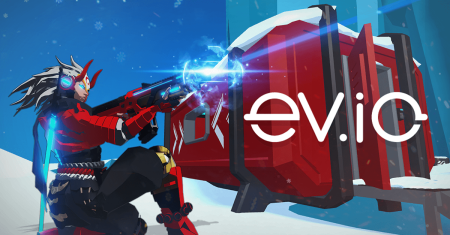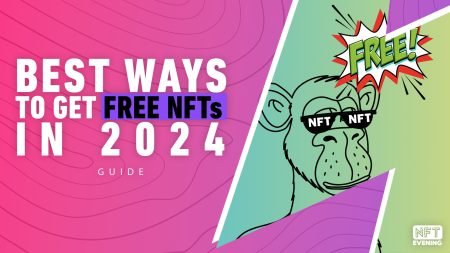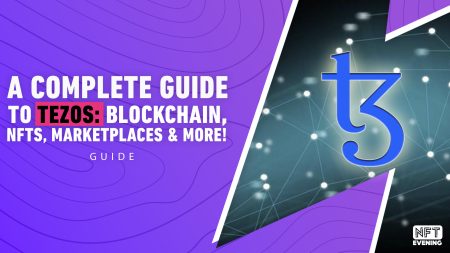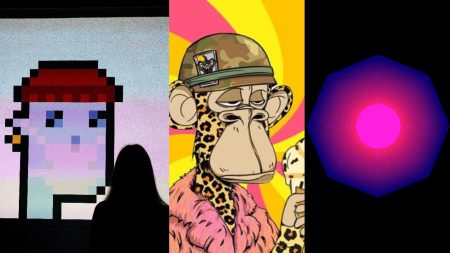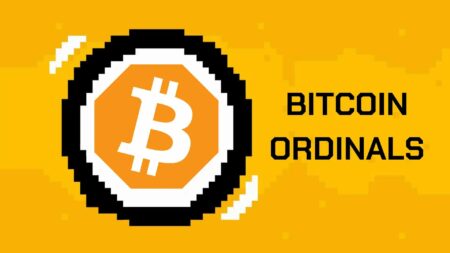If you’re looking to sell NFT art, music or collectibles, look no further. Obviously, one of the most lucrative ways of making money with NFs is to release your own collection! To put your first NFT up for sale might be daunting, but the sky is the limit when it comes to releasing non-fungible tokens on the blockchain. This guide will show you how to sell your NFT as simply as possible; From minting tips to NFT marketplaces, to promoting your NFT collection. So what are you waiting for? Here’s a step-by-step guide on where and how to sell your NFT collection, from listing to marketing. Plus, we will even share our tips on what to do when your NFT collection isn’t selling!
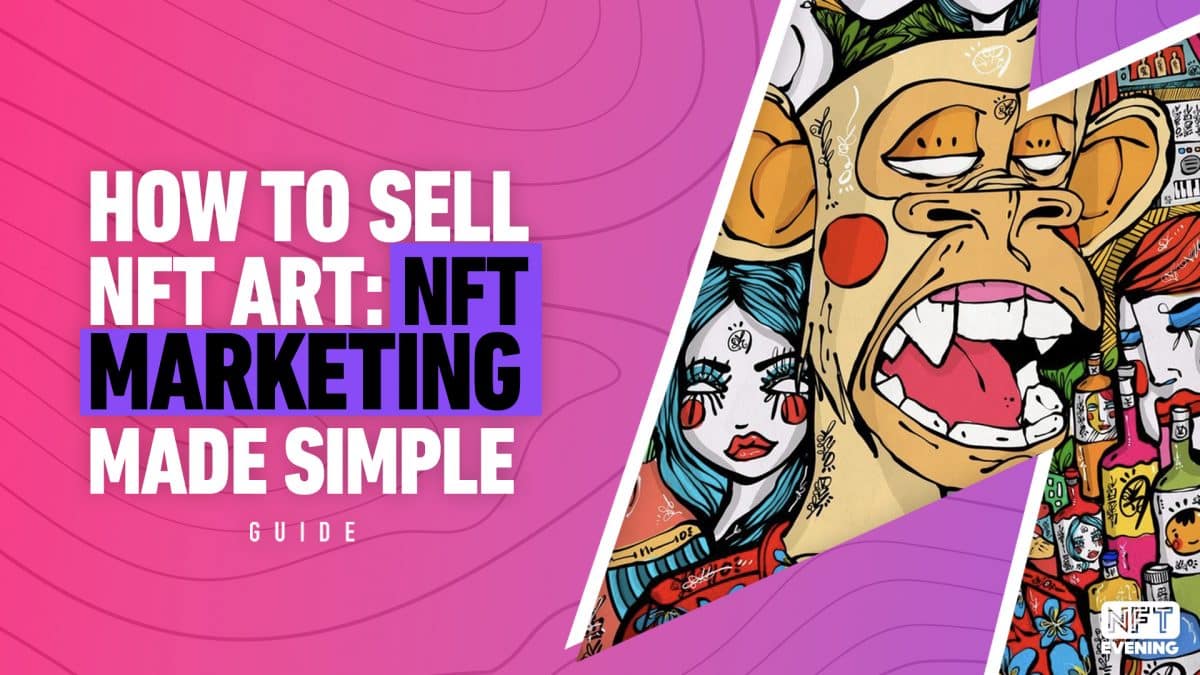
Where do people sell NFT collections?
If you are wondering where to sell your NFT collection, there are a few options but the main 2 main methods are: using NFT marketplace or an NFT launchpad. Each have perks of their own.
If you’re new to Non-fungible tokens it’s best to start with the most popular marketplaces:
Opensea is still the most busy marketplace to date. Artists big and small use Opensea due to its huge volume and notoriety in the space. Then, Magic Eden is a very popular marketplace too. Originally just for Solana NFTs, Magic Eden now supports ETH NFTs as well.
Next you have some more specific NFT marketplaces. Music NFTs, particularly from unsigned acts, sell better on music-focused marketplaces like Catalog or Async Music. Another home for NFT music includes Zora NFT marketplace too. Similarly, curated marketplaces such as SuperRare or Foundation are best for selling 1/1 NFT artworks. Really, there’s a marketplace for everything. You even have marketplaces for poems, photography and adult NFTs too! For the full down, check out our guide on the best NFT marketplaces in 2022.
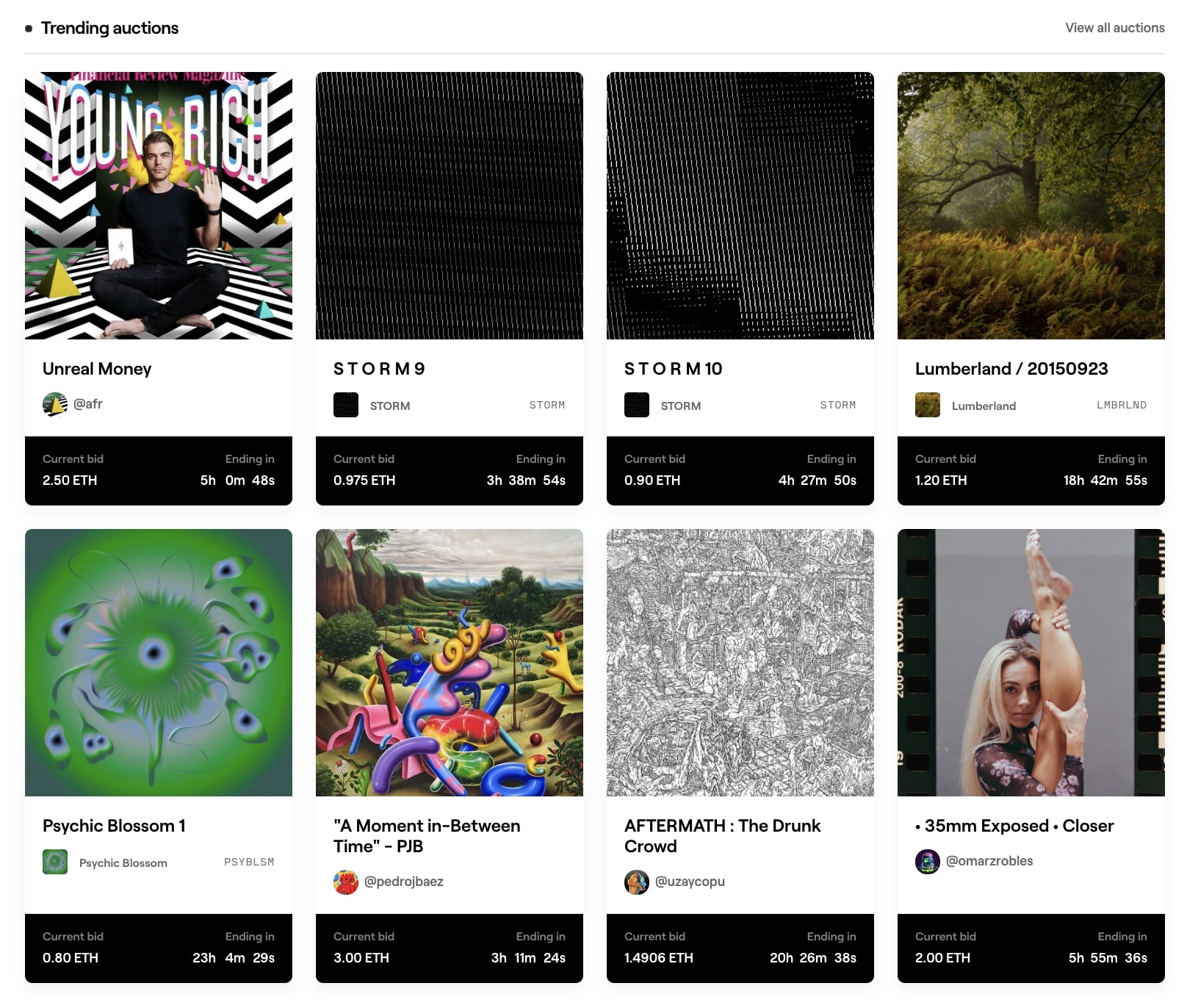
Your other option is to use an NFT launchpad or no-code minting platform. These allow you to sell NFTs through your own website or theirs. Good examples of these platforms include PREMINT and Nifty Kit. Both of these no-code solutions allow you to set the terms of your smart contract. For example, you can decide the percentage of each sale you will receive as a royalty. Furthermore, you can keep the ownership of the contract. That means you will be the contract owner, rather than an NFT marketplace.
What kind of NFTs sell?
Art NFTs
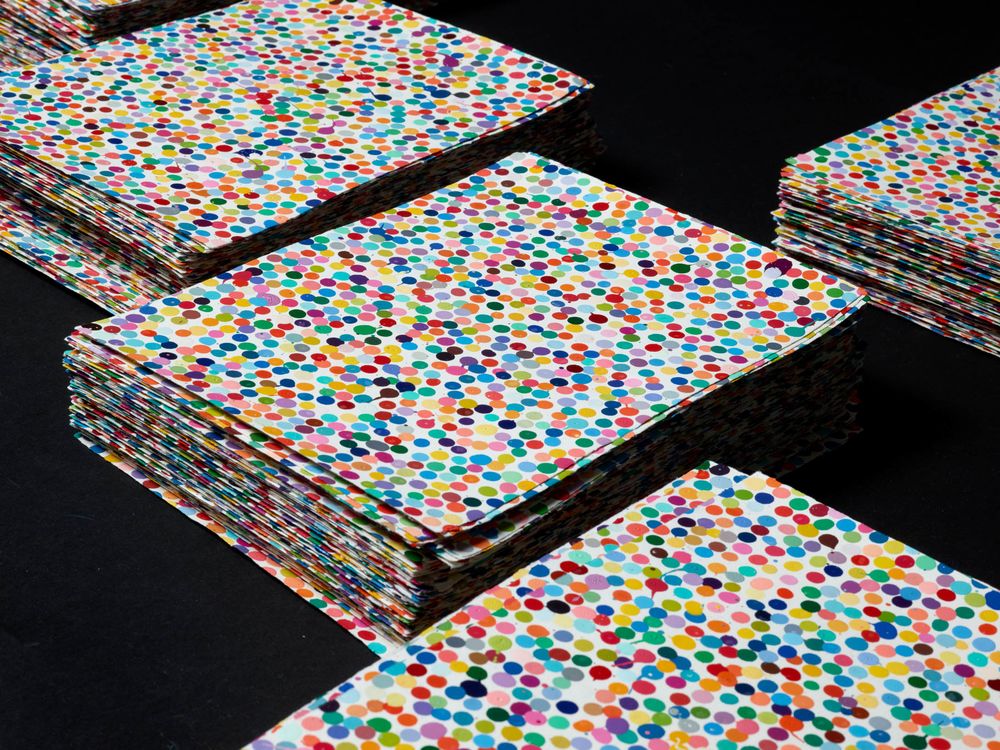
Art is one of the most popular categories of NFTs and often, the most highly-priced. Unique 1:1s will always have value to art collectors. People love art in all its forms and NFTs can just be simply just beautiful works of art.
While “The Currency” by Damien Hirst was bound to be a winner, NFTs don’t just help established artists get richer. Many web3 artists made their names with NFTs. A great example of this is 18-year old artist, FEWOCiOUS, who was the youngest artist ever to be featured at Christies. Selling 1:1 art or limited edition NFTs of your artworks may be the best idea. If you want some inspiration, check out the top selling NFT art of all time.
Another popular type of art NFT is generative art. Generative art is digitally made with code. While Autoglyphs may have been the first generative art collection, the most popular generative art project is Art Blocks. To explain, it’s the biggest generative art project to date, working with countless artists to make masterpieces. Some sell for absolutely crazy amounts of money! If you love code and art, check out our full guide on generative art NFTs.
Collectibles and PFPs
Collectibles are a huge category of NFTs that took off in 2021. From Cool Cats, to Azuki NFTs, collectibles are an NFT community favourite. Collectibles come in many forms but the most popular are PFP collections. This is due to the anonymous nature of many NFT personalities, plus the human love for personalization and entertainment. People use PFP NFTs as their online identities.
Apart from sentimentally, their value lies in their rarity, scarcity and certificated origin. Plus, many use collectibles as bragging rights – not unlike a Gucci jacket or a Rolex watch.
Within the NFT collectible genre, Storytelling NFTs have become extremely popular. These are NFT collectibles with a running storyline and brand feel. Good examples of these include The Bored Ape Yacht Club, Azurbala and Cel Mates. Another common theme in the collectible world is meme culture! Many collections base their NFTs from everyone’s favourite memes. If you like that kind of thing, check out our list of the best NFT memes!
Utility NFTs
Gary Vee coined the term back in 2021 and then rocked the whole market with his VeeFriends NFT collection. Gary wanted to prove that NFTs were more than PFPs. While VeeFriends offers direct access to Gary Vee, utility nfts aren’t limited to those kinds of perks. Utility can include benefits in real life or in the virtual world.
To give you an idea, it could be; free festival tickets for life, or discount in a specific shop, private access to a lounge in the metaverse or real life pieces of artwork. But maybe you need to think even bigger to sell your perfect NFT. For example, WiV Tech link NFTs to wine bottles. And Real estate company, Hypomo, launched a platform linking NFTs to real-life properties!
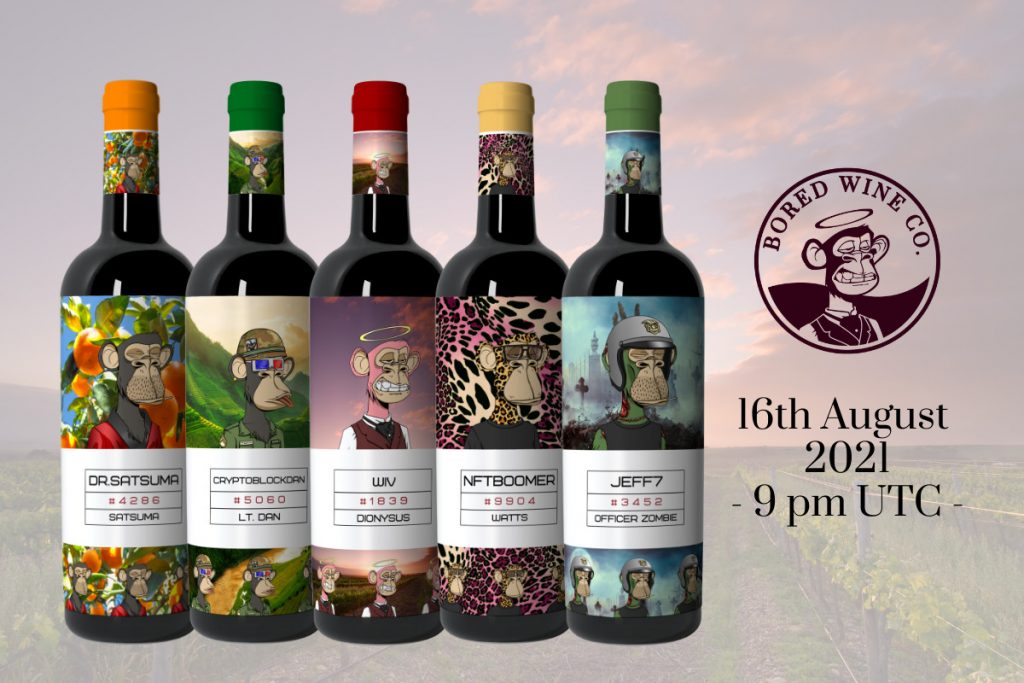
Communities, Membership Clubs and DAOs
Some of the most popular NFTs are simply membership clubs or communities. Often, these communities offer ‘alpha’ on the latest NFT collections. Or some of them simply offer NFT education, like ZenAcademy. Others focus solely on the community side, aiming to create an exclusive place for web3 people to network or find jobs. A good example of this is Proof Collective, the project behind Moonbirds.
Then, other top NFTs are membership tokens for Decentralized Autonomous Organizations, or DAOs. These DAOs drop coins to NFT holders which they can use as governance tokens. In short, these allow NFT holders to make decisions about a project without a central entity. A great example of an NFT project with a DAO is Rug Radio.
Music NFTs
Music NFTs have seen a huge amount of success. But its not just Snoop Dogg NFTs and Kings of Leon crypto albums. Some unsigned artists have made the most of nft royalties to make a living from selling NFTs. In 2022, both LATASHA and Ed Balloon launched their NFT music careers with great success. Are you a musician? Read our full guide on Music NFTs to learn more.
How much does it cost to sell an NFT?
Each time you sell an NFT it costs a gas fee. NFT gas fees, or transaction fees differ from blockchain to blockchain. While some blockchains offer the benefits of little to no gas fees, others can get up to thousands of dollars –just for buying or selling a single NFT. You can check the price of gas on a particular blockchain by using gas checker tools. For Ethereum, the most popular tool is Etherscan.
Today, listing a single NFT for sale will cost anywhere from $0.10-$10 depending on which blockchain you use and how busy the network is. Putting up a whole 10k NFT collection for sale, however, can cost up to $5000.
To learn more, check out our full article on NFT gas fees.
Can I sell NFTs for free?
There’s only one way to mint an NFT for free on blockchains that use most cryptocurrencies, and that’s lazy minting. Lazy Minting is a feature used by several NFT marketplaces, but was originally made famous by Opensea. In short, it allows you to upload your NFTs to the marketplace without paying the cost to mint them. Then, the marketplace will only take the fee someone decides to purchase it. Essentially, this saves the waste of energy and money minting NFTs no one wants. However, it’s not completely for free, you will have to pay to sell the NFT but it will come out of the money the buyer pays.
How to list an NFT for sale
Once you create your NFT, it will show up in your NFT marketplace profiles. Each marketplace differs slightly but here’s the gist of it step-by step.
- Choose the NFT you want to sell from your Profile and click “Sell” on the top right.
- On the listing page that opens up, you can select the type of sale and price. You can either sell it for a fixed price or set up an auction. You can also reserve it for a particular buyer.
- Select the duration of the sale.
- You will have to pay a small transaction fee to list your NFT for sale.
- Confirm your sale and tada! Your first NFT is up for sale!
Can you sell NFT art for real money?
Yes! All you need to do is sell your NFT to receive your cryptocurrency. Then, you can send your earnings to an exchange and cash out the money to your bank account. Alternatively, you could use a platform that lets you buy and sell NFTs with fiat currency such as dollars or euros. Although this isn’t currently so popular, Moonpay’s whole platform exists to facilitate these kind of transactions.
Why is my NFT not selling?
Perhaps no one knows your NFT collection exists! The first thing you must do before selling NFTs, is promote them. Fortunately, there are tons of methods. Here is the outline as to how you can promote your NFTs like a pro:
- Use Social Media and be present on all platforms
- Have a brand concept and stick to your branding
- Be entertaining and create value
- Make Collaborations with Influencers and other NFT projects.
- Write press releases and blog posts and get published on NFT news sites.
- Hire NFT Marketing companies to promote your NFTs for you.
If you want more help selling your NFT collection, contact one of our sales representatives who can take you through what’s possible!
All investment/financial opinions expressed by NFTevening.com are not recommendations.
This article is educational material.
As always, make your own research prior to making any kind of investment.


